DEFINITION OF TERMS:
- KEYSTONE means they are listed by National Wildlife Federation as core plants for a wildlife garden in my ecoregion (Ecoregion 8).
- NOT QUITE NATIVE means they are slightly out of range but adjacent to NYS as determined by GoBotany and NY Flora Atlas
- Otherwise the plant is a NY-native or native to the area noted
Canopy trees are those tall, sturdy trees that last for decades and even longer. Below are the ones we have on our smallish property.
KEYSTONE: Red maple (Acer rubrum ‘Armstrong’)
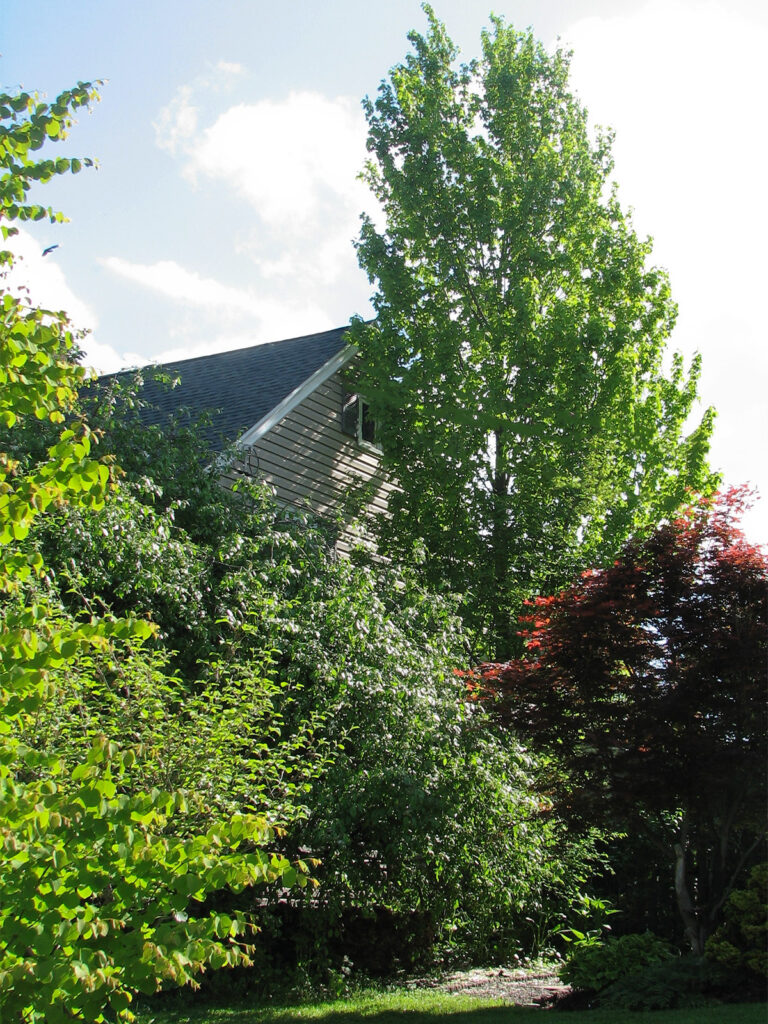
In addition to creating habitat, this cultivar of the red maple (the tree sticking up over the roof line) also helps cool the south side of our house.
We chose a cultivar since it was one of the few largish trees we could have fit in the very narrow space between our house and our neighbor’s house.
(It’s also the tree we would have had to remove if we had gotten solar panels, so we subscribe to community solar instead.)
Wildlife: Squirrels and birds; used by inchworms and relied on by Rosy maple moth, oval-based prominent, Retarded dagger moth, Orange-humped maple worm, Maple looper, Baltimore bomolocha
Larval host: Cecropia moth and other moths
Deer resistance: No
** SPECIAL VALUE TO NATIVE BEES **
- Learn more:
- Wildflower Center: Red maple
KEYSTONE: Sugar maple (Acer saccharum)
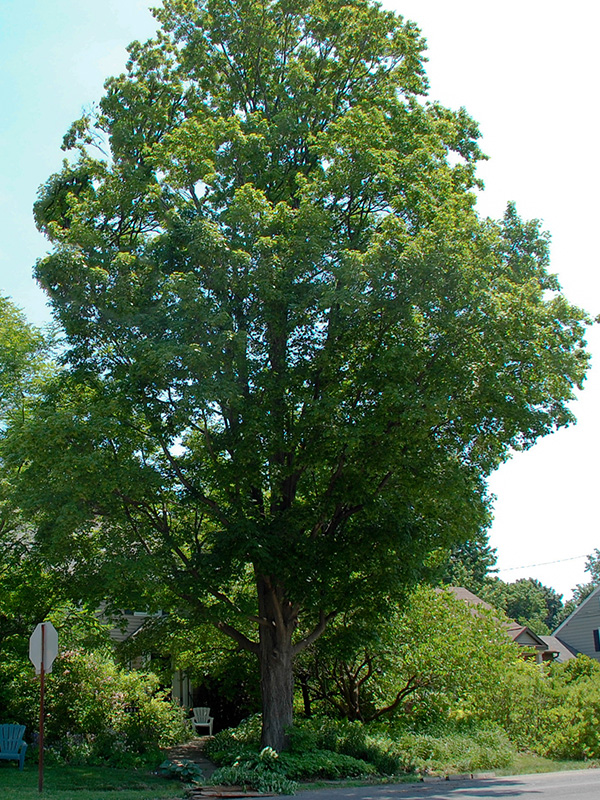
We have a sugar maple in our front yard, but one arborist said it will survive only another ten years or so (and that was a few years ago), though another arborist said it was in good health. When it finally gives out, we hope to cut it to the greatest height where it’s still safe (since it’s next to the sidewalk and road) and leave it as a snag for cavity-nesting birds. It will be a perfect place for a trumpet vine. I’ve seen one growing up a pole before, and it’s very attractive. So even after the tree dies, it will still be life-giving.
Wildlife: Birds
- Learn more:
- Wildflower Center: Sugar maple
SE/MIDWEST (Up to PA) NATIVE: Kentucky coffee tree (Gymnocladus dioicus)
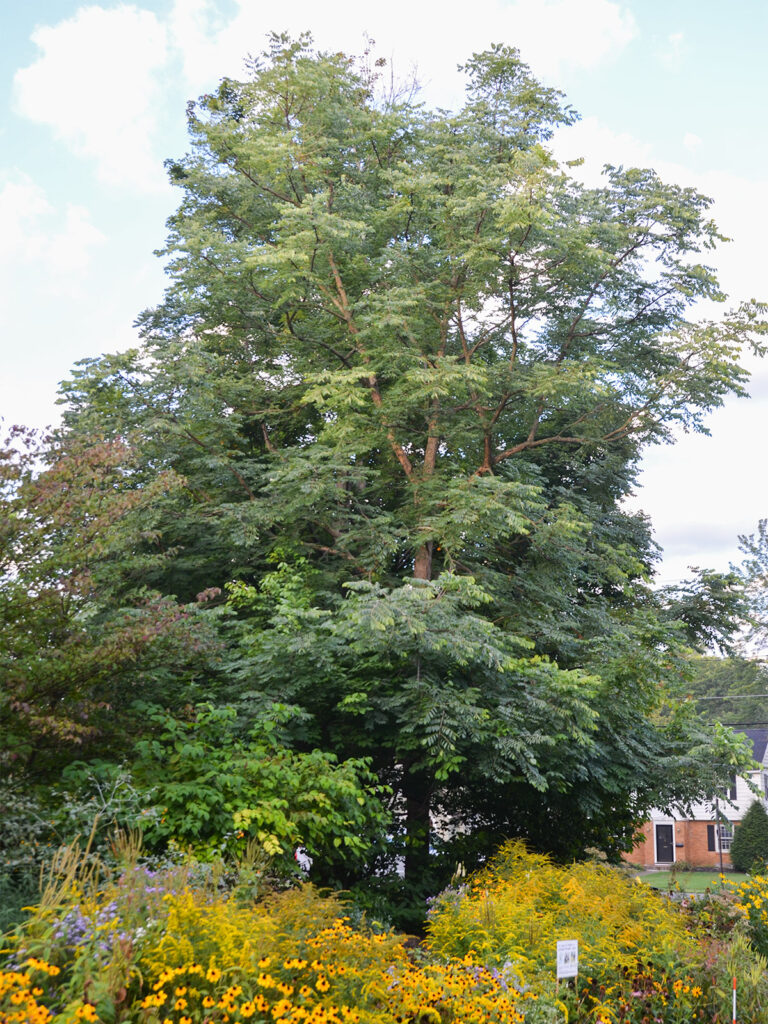
This Kentucky coffee tree is our second largest tree after our sugar maple. It was about 40 feet tall when it was just about 25 years old.
We know its age because our now-adult son collected the seed (actually a nut) from a local arboretum and planted it in a cottage cheese container when he was in nursery school!
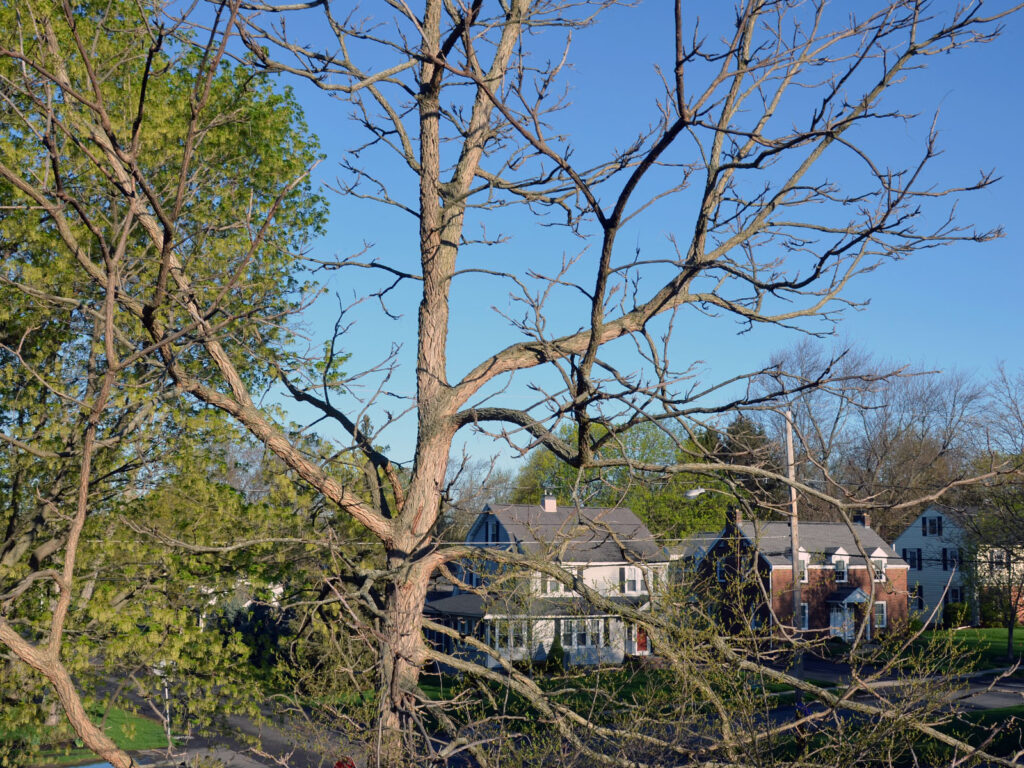
The Kentucky coffee tree takes its time in spring, as this image in late April shows. People often ask me whether it’s dead. It does look dead since other trees are already leafed out, but once it gets going, it leafs out very fast and is beautiful.
This tree provides shade that isn’t as dense as some, so plants such as our spicebushes grow well under it. On the other hand, it doesn’t have as high habitat value in terms of supporting a lot of insect life.
Larval host: Bicolored honey locust moth, Bisected honey locust moth
- Learn more:
- Wildflower Center: Kentucky coffee tree
KEYSTONE: Black cherry tree (Prunus serotina)
As far as we know, our black cherry is a volunteer. It was only about 6 ft. tall when we moved here, and we didn’t know what it was for many years. If we had known, we would have kept it from being a triple-trunked tree. It’s very large now, but still seems healthy, though it has a very weak crotch.
It’s a favorite hangout for birds.
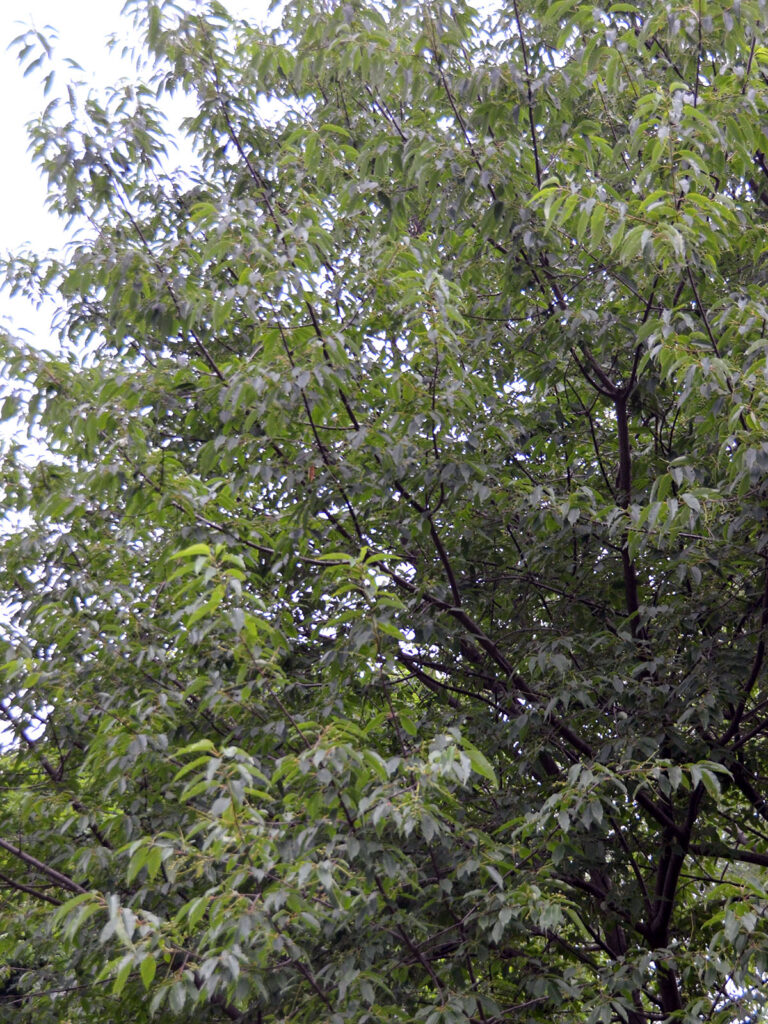
Wildlife: Fruit used by 33 species of birds, many mammals
Larval host: Eastern tiger swallowtail, Cherry gall azure, Viceroy, Columbia silkmoth, Promethea moth, Small-eyed sphinx moth, Wild cherry sphinx moth, Banded tussock moth, Band-edged prominent, Spotted apatelodes
** SPECIAL VALUE TO NATIVE BEES **
** SPECIAL VALUE TO BUMBLE BEES **
** SUPPORTS CONSERVATION BIOLOGICAL CONTROL **
- Learn more:
- Wildflower Center: Black cherry tree
KEYSTONE: Red oak (Quercus rubra)
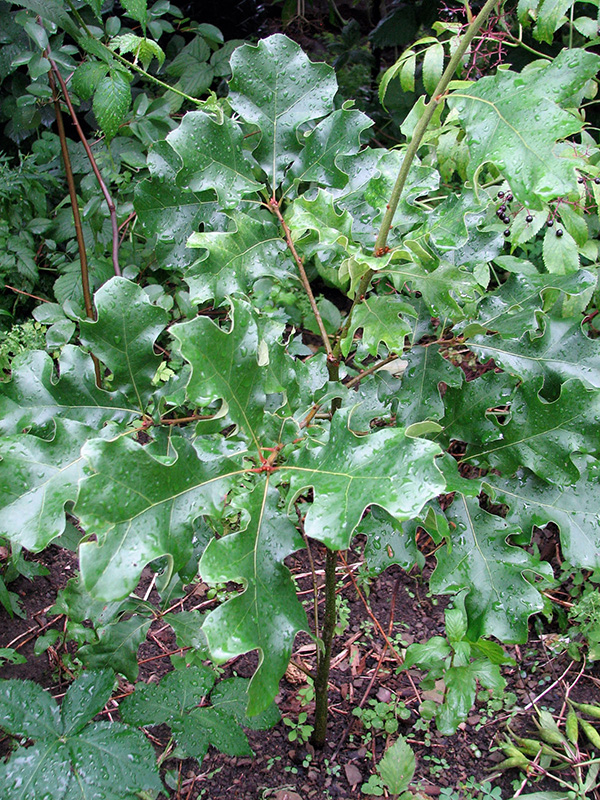
The oak genus is a “Biodiversity All-Star.” Tallamy’s research (see his book Bringing Nature Home) has found that it supports 534 species of Lepidoptera (moths and butterflies), which he uses as a proxy for gauging the total number of insect species supported, which in turn supports other creatures, such as birds (and ultimately humans).
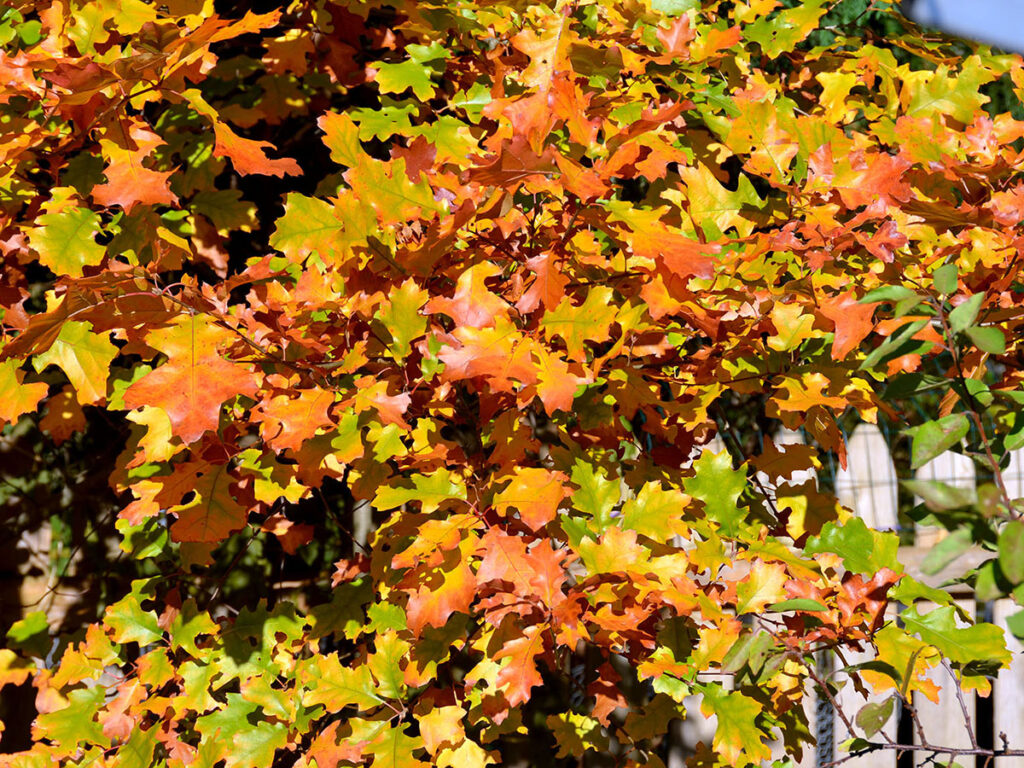
We planted it in the back of the yard, but we hope it doesn’t grow so fast that it starts shading our vegetable garden. It’s meant to be a legacy tree for the next generation.
Wildlife: Birds and mammals, hummingbirds
Larval host: Gray hairstreak (and lots of others!)
- Learn more:
- Wildflower Center: Red oak
- Bio4Climate: Featured creature: Northern red oak
- Homegrown National Park: How to plant oak trees from acorns – 1 min video
- NYS DEC: Oak wilt – Do NOT prune oak trees in spring or summer
- NYTimes: Why we should all be chasing acorns
- Joe Gardener: Why oaks are our most essential native tree w/Doug Tallamy
- Nature’s Notebook: Quecus Quest
